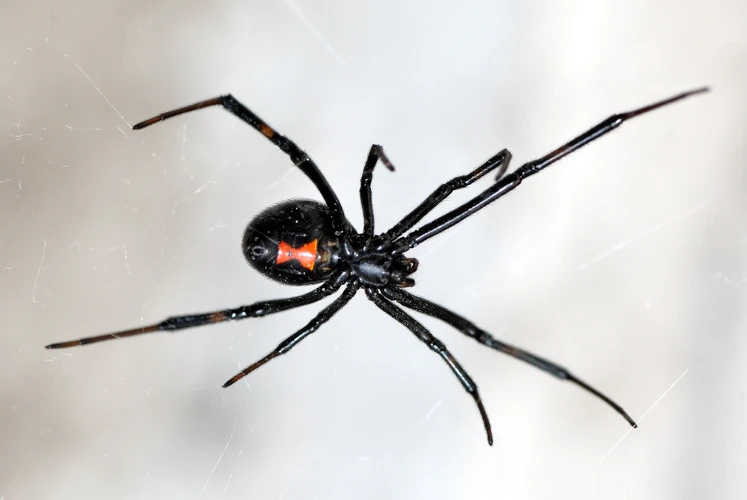As you step into your yard, you might never expect to come across a black widow spider. But, as the old saying goes, it’s better to be safe than sorry. The reality is, these venomous spiders can be found in every state in the USA, and their bites can lead to serious health consequences. So, what should you do if you suspect you have black widow spiders on your property? In this article, we’ll explore where and how to search for these creepy crawlers, how to identify them, and the best methods for safely removing them from your yard. Plus, we’ll discuss ways you can prevent black widow spiders from taking up residence in the first place. Let’s get started!
Why You Should Care About Searching for Black Widow Spiders

It’s important to know about black widow spiders, and even more important to know how to find them. Black widow spiders are among the most poisonous spiders in North America, and a bite from a black widow spider can be extremely painful and even deadly in rare cases. Knowing how to effectively search for black widow spiders in your yard can help you protect yourself, your family, and your pets from their dangerous bites.
What are Black Widow Spiders?
Black widow spiders are known for their distinctive appearance. They are typically shiny black with a red hourglass shape on the underside of their abdomen. These venomous spiders are found all over the United States and are common in outdoor areas such as gardens, wood piles, or cluttered areas.
Why are They Dangerous?
Black widow spider venom is a neurotoxin that can cause pain, muscle cramps, spasms, and other symptoms that can last for days. In some cases, the bite can be deadly, especially for small children, older adults, or individuals with compromised immune systems.
Who is at Risk?
Anyone who spends time outdoors in black widow spider habitats can be at risk of getting bitten. However, children and individuals with compromised immune systems are more susceptible to severe reactions from the venom. Pregnant women should also be careful around black widow spiders as their bites can potentially result in preterm labor.
It’s important to keep in mind that black widow spiders are not aggressive and usually only bite when they feel threatened. However, accidental contact such as sticking a hand into a wood pile or reaching into a cluttered area can still result in a bite.
Knowing when and where to search for black widow spiders can help you prevent contact with these potentially dangerous arachnids.
What are Black Widow Spiders?
When it comes to spiders, the black widow is perhaps one of the most infamous and feared. Known for their venomous bite, these spiders are small but deadly. But what exactly are black widow spiders and what should you know about them? Let’s explore their physical characteristics, behavior, and habitats to better understand these arachnids.
Why are They Dangerous?
Black Widow Spiders are considered to be one of the most dangerous spiders on the planet for a good reason. Their bites can cause severe symptoms, including muscle cramps, spasms, and severe pain. These symptoms can last for several days, and in extreme cases, even cause death. In this section, we will look at some of the reasons why Black Widow Spiders are so dangerous.
To begin with, Black Widow Spiders are venomous. They have neurotoxic venom that affects the nervous system of their prey. When a Black Widow Spider bites a human, the venom affects their nervous system, causing severe symptoms. The severity of the symptoms depends on several factors, including the age, size, and overall health of the individual bitten.
Black Widow Spiders are known for their painful bites. The bites can cause severe pain that spreads to other parts of the body. Victims have reported muscle cramps and spasms in the limbs and abdomen. The pain can last for several days and can be excruciating, interrupting sleep and everyday life.
But who is at the greatest risk of encountering a Black Widow Spider? While many people encounter these spiders, certain groups are at higher risk of being bitten. These groups include outdoor workers, children, and individuals who spend a lot of time outdoors. People who live in warm and humid climates with a high concentration of Black Widow Spiders are also at increased risk.
It’s essential to understand the risks associated with Black Widow Spiders. Taking precautions and knowing what to do if you encounter one of these spiders can save you from experiencing severe symptoms. It’s also important to note that being aware of your surroundings and knowing where to find these spiders can help prevent bites altogether. For more information on where to look for Black Widow Spiders, check out our article on how to spot black widow spider webs.
Who is at Risk?
It’s important to know who is at risk when it comes to black widow spiders in your yard. These spiders are found throughout the United States and are most commonly found in warm southern states. However, they can also be found in cooler regions as well.
While anyone can come into contact with a black widow spider, there are some groups of people who may be at a higher risk. Outdoor workers, such as landscapers and construction workers, are at a higher risk of encountering a black widow spider due to their job duties. Those who have outdoor clutter, such as piles of firewood or debris, are also at a higher risk.
Children who like to play outside are also at a higher risk of encountering black widow spiders. These spiders prefer to build their webs in dark, damp places, so outdoor play areas like tree houses or jungle gyms are potential hotspots for black widow spiders. Additionally, black widows tend to be more active at night, which increases the chances of a child coming into contact with one unknowingly.
Others at an increased risk include those with basements or crawl spaces that are cluttered or have spider-friendly environments, such as dark corners or unkempt areas. Black widow spiders can also be found in and around outdoor furniture, as well as in or near spider nests.
Knowing who is at risk can help you take the necessary precautions to minimize your chances of encountering a black widow spider. Taking steps to declutter and clean your outdoor areas, as well as inspecting items like firewood and outdoor furniture, can go a long way in preventing a dangerous encounter.
When to Search for Black Widow Spiders
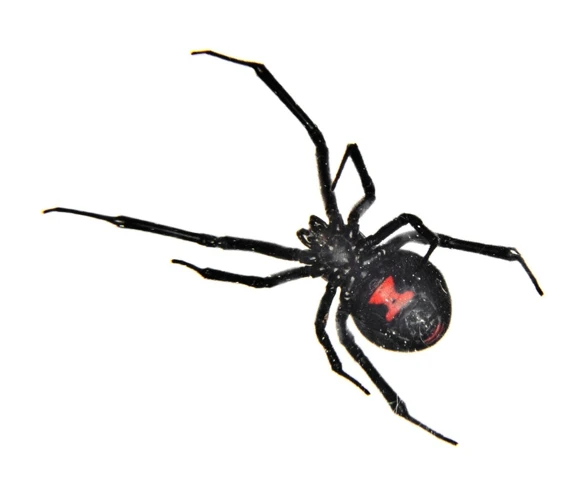
When to Search for Black Widow Spiders
It’s essential to know the right time to search for black widow spiders to get effective results. Typically, black widow spiders are nocturnal, so it’s best to comb through your yard during the night. The spiders are more active when the temperature cools down and become inactive during the day when temperatures are high.
Season
The time of year also plays a crucial role in black widow spider activity. Black widow spiders are more commonly seen during the warmer months, from April to October. During this time, they’ll usually be more visible, especially when they’re actively hunting for their prey.
Time of Day
Nocturnal spiders are easier to spot at night, but it can be dangerous to search for them in the dark. It’s important to take caution when searching for them at night and use a flashlight, and wear protective clothing like long-sleeved shirts and pants. If you prefer to search for them during the day time, you may do so, but you may want to look for them in dark areas like beneath outdoor furniture, in dense vegetation, or in sheds and garages.
Knowing the right time to search for black widow spiders will increase your chances of locating them. Be cautious when actively searching your yard for them and use protective clothing. It’s better to be safe than to be sorry, especially when dealing with such venomous spiders.
Time of Day
It’s important to be strategic when searching for black widow spiders in your yard. One key factor to consider is the time of day when you conduct your search. Different times of the day can impact where and how the spiders move around, which can impact your chances of spotting them. It’s crucial to know when to search to maximize your chances of success.
Season
As far as the season is concerned, black widow spiders are more common in warm weather. They usually appear in the late spring and early summer months, which means that taking extra precautions during these months is essential to prevent dangerous encounters. However, it’s worth noting that black widow spiders can survive all year-round and can be active even in the winter, especially in warmer climates.
During the summer months, it is advisable to keep an extra eye out for black widow spider nests in your yard. They usually look like messy, tangled webs located in dark and sheltered areas. You can typically find them in different locations such as near fabrics, woodpiles, or under outdoor furniture. It is necessary to take necessary actions and clean potential nesting places, especially during such seasons.
If you keep firewood outside, store it at least 20 feet away from your home and five inches off the ground. A black widow spider can make a home in the firewood stack and then migrate into your home. Always keep your outdoor firewood stored properly.
Keeping outdoor living spaces free of clutter, such as piles of leaves, rocks, and other debris, is important as an individual may inadvertently end up disturbing a nest when moving such things around. It’s also important to check all outdoor furniture and other belongings to ensure that spiders haven’t made themselves at home in the cushions and between cracks.
Being aware of the seasonal activity of black widow spiders is crucial to prevent any dangerous encounters. Keeping your outdoor living spaces free from clutter and checking potential nesting locations on a regular basis are some significant steps to take. Remember, prevention is always better than after-the-fact treatment or removal.
Where to Look for Black Widow Spiders
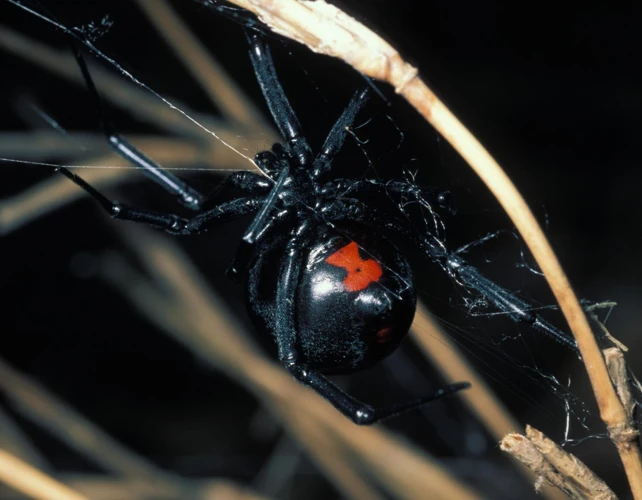
Where to Look for Black Widow Spiders
Knowing where to look for black widow spiders is essential for effective searching. By understanding their favorite hiding and nesting spots, you can increase your chances of finding these dangerous spiders before they pose a threat to you or your family. Here are some common places where black widows may be lurking in your yard:
Webs
One of the most common places to find black widow spiders is in their webs. These spiders weave messy, tangled webs in areas where they are likely to catch their prey. Look for webs around trees, shrubs, bushes, and tall grasses. Black widows often build webs close to the ground, so be sure to check the undersides of leaves, branches, and other objects on the ground.
Dark, Damp Places
Black widow spiders prefer to hide in dark, damp places such as piles of firewood, rocks, and debris. They are nocturnal creatures, so they tend to avoid direct sunlight and stay hidden during the day. Check areas such as wood piles, compost bins, and storage sheds that are undisturbed for a long time. Be cautious when working in these areas and wear gloves to avoid getting bitten.
Some other common spots where black widows can be found include outdoor furniture, basements, and cluttered outdoor areas.
It’s important to remember that black widows are not always easy to spot, as they can hide in cracks, crevices, and tight spaces. Use a flashlight to illuminate dark areas and comb carefully through any dense foliage or debris.
By knowing where to look for black widow spiders, you can take steps to minimize your risk of encountering them in your yard. If you think you have found a black widow spider, it’s important to know how to identify them correctly before attempting to remove them. Please refer to the next section for more information on how to identify black widow spiders.
Internal link: black widow spider nests in yard
Webs
Searching for black widow spiders in their webs can be one of the most effective ways to identify their presence in your yard. Black widow spiders often spin webs in secluded, quiet areas where they can hunt for prey and remain undisturbed. It’s important to exercise caution when searching for spider webs, as black widows can be present in unexpected places. For example, they have been known to spin webs in firewood piles (link), outdoor clutter (link), and even outdoor furniture (link). In this section, we’ll explore some common locations where black widows might spin webs in your yard and how to safely approach and identify these spider webs.
Dark, Damp Places
Black widow spiders are fond of dark, damp places, so it’s important to check these areas when searching for them in your yard. These spiders often build their webs in places like garages, basements, sheds, and crawl spaces. They also like to hide in cluttered areas or among piles of debris.
To effectively search for black widow spiders in these areas, approach with caution and wear protective gloves. Use a flashlight to closely examine any corners, crevices, or cracks where spiders may be hiding. It’s important to remember that black widow spiders are black with a distinctive red hourglass shape on their abdomen.
If you find evidence of black widow spiders in these areas, it’s crucial to take action to safely remove them. You can use DIY methods like vacuuming up the spiders and their webs or placing sticky traps in their hiding spots. However, it’s important to remember that black widow spiders are highly venomous, so professional removal may be necessary, especially if there’s a large infestation or if they are found in highly trafficked areas.
By regularly checking these common black widow spots and taking preventative measures, such as decluttering and landscaping properly, you can reduce the risk of encountering black widow spiders in your yard. Don’t forget to also check for black widow spider nests when searching in these dark, damp places.
Remember, it’s important to take all necessary precautions when searching for black widow spiders to ensure your safety and the safety of those around you. Learn more about the risks of outdoor play and how to protect yourself and your family from black widow spiders outdoors.
How to Identify Black Widow Spiders
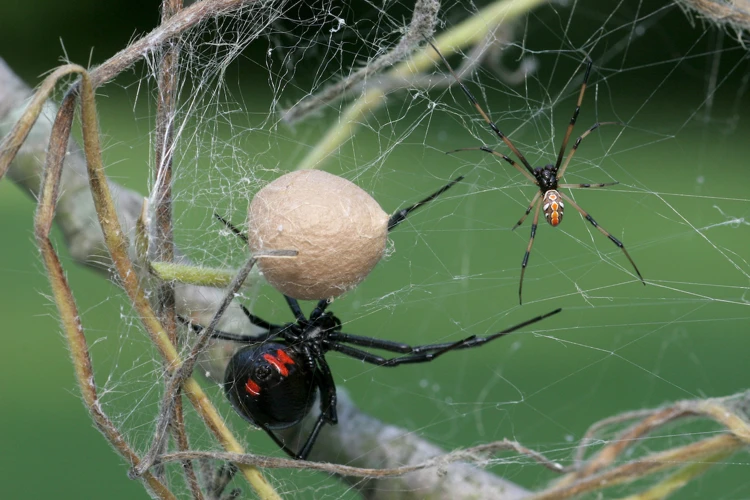
Identifying Black Widow Spiders can be a crucial step in ensuring your safety against their dangerous bites. Here are some ways to spot them:
Physical Characteristics: Male Black Widow Spiders are generally harmless and smaller than females, who are potentially dangerous. Female Black Widow Spiders have a unique and distinctive appearance, with a round, plump black body and a red hourglass-shaped marking on their abdomen. However, not all female Black Widows have red hourglass markings. Some may have two red spots, or their markings may be faded or incomplete.
Behavior: Black Widow Spiders are known for their web-spinning abilities. They weave tangled webs that they use to trap their prey. They also tend to hang upside down on their webs, waiting for prey to come to them. They are most active at night, and during the day, they usually hide in dark, quiet areas.
If you spot a spider that matches the physical description and behavior of a Black Widow Spider, it is best to approach with caution. If you are unsure about whether a spider is a Black Widow or not, it is better to be safe than sorry and avoid contact.
To learn more about where to find Black Widow Spiders, check out our article on common Black Widow spots and their affinity for basements.
Physical Characteristics
When it comes to identifying black widow spiders, their physical characteristics are key indicators. These spiders have distinct markings that can help differentiate them from other spider species. Additionally, their size and shape play a role in identification. Let’s take a closer look at these identifying features and how to spot them in your yard. For more information on common areas black widows are found, check out our guide on common black widow spots.
Behavior
Black widow spiders have distinctive behaviors that make them easy to identify. Here are a few characteristics that you should be aware of when searching for black widow spiders in your yard:
- Web design: Black widow spiders spin dense, tangled webs that look like a disorganized mess. These webs are designed to catch small insects and other prey, and are often found near the ground in secluded or protected areas.
- Hiding spots: Black widow spiders are usually found in dark, secluded areas like wood piles, storage sheds, and garages. They are not usually found in open areas with a lot of human activity, but can sometimes be found in planters or other areas with dense vegetation.
- Aggressiveness: Black widow spiders are not aggressive by nature, and will usually only bite if they feel threatened or cornered. If you accidentally stumble onto a black widow spider’s web or nest, it may rear up and show its underside as a warning, or may retreat further into its hiding spot.
- Bite symptoms: The bite of a black widow spider is usually painless at first, but can quickly cause severe muscle pain, cramps, and other symptoms. Seek medical attention immediately if you suspect that you have been bitten by a black widow spider.
By understanding the behavior of black widow spiders, you can take steps to reduce your risk of encountering them in your yard. Avoid reaching into dark, enclosed spaces without checking for spiders first, and be careful when moving items that have been stored for a long time. With a little caution and awareness, you can keep your yard free of black widow spiders and other dangerous pests.
How to Safely Remove Black Widow Spiders from Your Yard
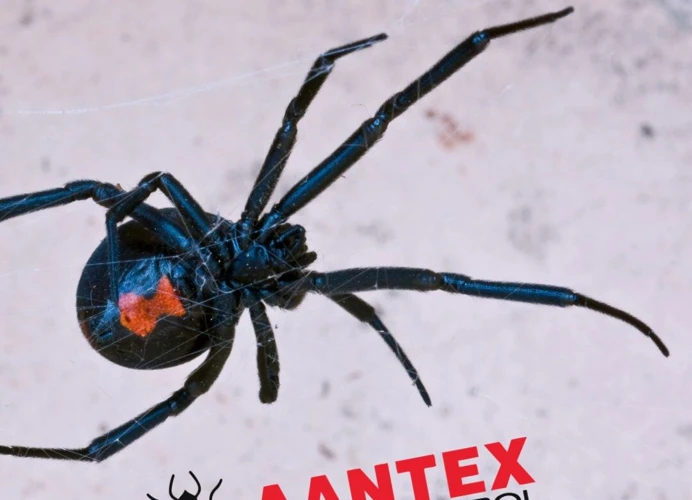
Removing black widow spiders from your yard should be done carefully to avoid bites and potential health risks. Here are some effective ways to get rid of them:
DIY Methods:
If you decide to remove black widow spiders yourself, here are some methods you can use:
1. Vacuuming- Using a vacuum cleaner with a hose and nozzle attachment can be an effective way to get rid of black widow spiders and their webs. Be sure to vacuum all areas where spiders may be hiding, like corners and crevices. After vacuuming, seal the vacuum bag in a plastic bag and dispose of it in an outdoor trash bin to prevent the spiders from escaping.
2. Traps- Place sticky traps in areas where spiders are known to hang out, like in sheds, under decks, or in basements. Be sure to check the traps regularly and dispose of them promptly once a spider is caught.
3. Insecticides- Pesticides can be applied around the perimeter of your home and yard to keep spiders away. Be sure to follow the instructions carefully and wear protective gloves and clothing when using insecticides.
Professional Removal:
If you are uncomfortable removing black widow spiders yourself or if you have a severe infestation, you may want to consider hiring a professional pest control service. They have the knowledge and equipment to safely remove black widows from your yard. Be sure to choose a licensed and reputable pest control company.
It’s important to note that killing spiders is not always necessary. Spiders are an important part of the ecosystem and can help control other pests in your yard. If you do choose to remove them, be sure to do so safely and responsibly.
DIY Methods
Now that you have identified black widow spiders in your yard, you may want to remove them to keep your family and pets safe. While consulting a professional is always an option, you may prefer to take the DIY approach. With some caution and the right tools, you can safely remove these potentially dangerous spiders from your property. Here are some DIY methods for removing black widow spiders from your yard.
Professional Removal
If you’re dealing with a large infestation of black widow spiders, it’s best to call in the professionals. A trained pest control expert will have the knowledge and experience necessary to safely remove the spiders from your yard.
When looking for a pest control company, it’s important to choose one that has experience dealing specifically with black widow spiders. Look for companies that offer environmentally-friendly solutions, as many pesticides can be harmful not only to spiders but also to other insects, plants, and animals in your yard. Additionally, make sure the company is licensed and insured to protect yourself and your property.
Once the professionals arrive, they will likely conduct a thorough inspection of your property to assess the extent of the infestation. They may use a combination of methods to remove the spiders, including vacuuming, trapping, and the use of insecticides.
It’s important to follow the instructions of the pest control expert after they’ve completed the removal process. This may include keeping pets and children away from treated areas for a certain amount of time or disposing of any spider webs or egg sacs that were found.
Remember: Professional removal is often the best option for large or dangerous infestations. Don’t hesitate to call in the experts if you feel unsure or overwhelmed by the presence of black widow spiders in your yard.
Preventing Black Widow Spiders in Your Yard
One of the best ways to prevent black widow spiders from infesting your yard is to keep it clean and decluttered. Eliminating clutter such as piles of debris, wood, and rocks can reduce the places where black widow spiders can hide and thrive. Removing old tires, boxes, and other unused items from your yard can also help reduce the spider’s hiding spots.
Another important step in preventing black widow spiders is to keep your landscaping maintained and trimmed. Tall weeds and grass provide an ideal habitat for insects, which serve as a food source for black widow spiders. Keeping your lawn mowed and maintaining your garden beds can help eliminate hiding spots for both insects and spiders.
In addition to cleaning and landscaping your yard, consider sealing cracks and gaps in your home’s foundation and exterior walls. Doing so can help prevent black widow spiders from entering your home or garage, where they can build their webs and hide in undisturbed areas.
If you have concerns about black widow spider infestations in your yard, contacting a pest control professional may be the best solution. A professional can identify potential areas of infestation and recommend appropriate action to prevent the spread of these dangerous spiders.
Taking proactive steps to keep your yard clean and well-maintained is key to preventing black widow spiders from becoming a problem. By reducing their hiding places and eliminating their food sources, you can make your yard a less attractive habitat for these potentially harmful spiders.
Cleaning and Decluttering
Keeping a clean and clutter-free yard is an effective way to prevent black widow spiders from making it their home. Black widows are attracted to areas with debris, as it provides hiding spots and a suitable environment for them to thrive. By following some simple cleaning and decluttering tips, you can significantly reduce the risk of black widow infestations in your yard. Let’s take a look at some ways to keep your yard clean and prevent these dangerous spiders from settling in.
Landscaping
Keeping your yard free of debris and clutter is one way to prevent Black Widow Spiders from taking up residence. Landscaping can also play a significant role in keeping spiders away. Here are some landscaping tips to prevent black widow spiders in your yard:
| Tip | Explanation |
| Trim Shrubs and Tall Grasses | Black Widow Spiders love to hide in tall grasses and shrubs, so make sure to keep them well-trimmed. |
| Seal Cracks and Crevices | Black Widow Spiders can crawl through small cracks and crevices. Seal these up to make it harder for them to enter your yard. |
| Eliminate Clutter | The less clutter you have, the fewer places Black Widow Spiders have to hide. Get rid of any items lying around that could provide a hiding spot for these spiders. |
| Use Gravel Instead of Mulch | Black Widow Spiders love to hide in mulch, so consider using gravel instead in your landscaping. |
| Consider Companion Planting | Planting certain plants, such as marigolds or mint, can help keep pests away, including Black Widow Spiders. |
| Keep Your Yard Clean | Black Widow Spiders are more likely to take up residence in yards that are unkempt. Make sure to regularly clean up any debris, such as leaves or fallen branches. |
By following these landscaping tips, you can help prevent Black Widow Spiders from taking up residence in your yard and keep your family safe. Remember, prevention is key when it comes to these dangerous spiders.
Conclusion
After reading this article, it’s important to understand the potential risks of having black widow spiders in your yard. These spiders are venomous and known for their dangerous bites, making it crucial to learn how to effectively search for and identify them. By taking the necessary steps to remove and prevent black widow spiders in your yard, you can protect yourself, your family, and your pets from potential harm.
Remember to always wear gloves and protective clothing when searching for black widow spiders, and to never handle them with your bare hands. If you suspect a spider is a black widow, it’s best to contact a professional for removal. By being aware of the risks and knowing how to protect yourself, you can enjoy your yard without the worry of black widow spiders. Taking the time to clean and declutter your yard, as well as landscaping strategically, can go a long way in preventing these spiders from making your yard their home.
In conclusion, it’s essential to take black widow spiders seriously and take the necessary steps to prevent their presence in your yard. By staying vigilant and following the advice in this article, you can reduce the risk of encountering these dangerous spiders and ensure the safety of your loved ones and pets. Stay informed, stay safe, and enjoy your yard without the worry of black widows.
Frequently Asked Questions
Can you find black widow spiders in all parts of the world?
Black widow spiders are found in many parts of the world, including the United States, Europe, Asia, and Australia.
What should I do if I find a black widow spider in my yard?
If you find a black widow spider in your yard, it’s important to take action to remove it safely and prevent future infestations.
How can I tell if a spider is a black widow?
Black widow spiders can be identified by their black body color, red hourglass marking on the abdomen, and their round, bulbous shape.
Are all black widow spiders venomous?
All species of black widow spiders are venomous, but not all bites are fatal. Seek medical attention immediately if you suspect you have been bitten.
What attracts black widow spiders to my yard?
Black widow spiders are attracted to clutter, piles of debris, and areas with minimal sunlight. Cleaning up these areas can help prevent infestations.
Can I use pesticides to get rid of black widow spiders?
Pesticides can be effective in killing black widow spiders, but it’s important to use them safely and follow all label instructions.
Are black widow spiders nocturnal?
Black widow spiders are most active at night and tend to hide during the day, making them difficult to spot.
What should I wear when searching for black widow spiders?
Wear clothing that covers your skin, such as long pants and sleeves, and use gloves to protect your hands when searching for black widow spiders.
How can I prevent black widow spiders from coming back?
Cleaning up clutter and debris, maintaining a tidy yard, and sealing up cracks and crevices can help prevent black widow spiders from returning to your yard.
Should I try to handle a black widow spider if I find one?
No, it’s important to never handle a black widow spider as their bites can be very dangerous. Instead, call a professional for safe removal.

